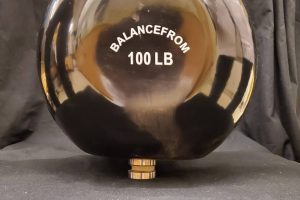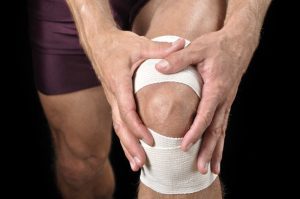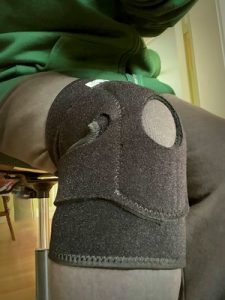But orthopaedic docs say total knee replacements are the best, and that such materials have not been a success so far.

Duke University researchers claim to have found a hydrogel to tackle knee problems. But doctors are sceptical. (Creative Commons)
A gel-based cartilage has been developed by researchers from Duke University who claim this will solve the problem of total knee replacements. Doctors are, however, sceptical, saying that several such materials have been tested and used over the years but have not withstood the test of time.
Speaking to South First, Dr Anand Murthy, renowned orthopaedic surgeon from Bengaluru, said, “Many such implants and chondroprotective injection materials have been tested and used over years, but none have withstood the test of time like total joint replacement.”
Cartilage is the primary connective tissue in the human body. It has many functional as well as structural uses, especially in our joints. It is also found in the spine, lungs, nose and ears.
In the journal Advanced Functional Materials, a Duke University-led team says that the gel-based cartilage substitute is stronger and more durable than real cartilage.

Duke researchers have developed the first gel-based synthetic cartilage with the strength of the real one. A quarter-sized disc of the material can withstand tearing or losing its shape (Supplied)
To make this material, the team has claimed to have used thin sheets of cellulose fibers and infused them with a viscous goo consisting of repeating molecules called polyvinyl alcohol.
This combination forms a hydrogel and the fibres are like the collagen fibres in natural cartilage.
The gel gives strength when stretched and the polyvinyl alcohols help it come back to its original shape, the researchers say.
“While natural cartilage can withstand 5,800 to 8,500 pounds per inch of tugging and squishing before it reaches breaking point. This lab-made version can handle much more,” says the study.
The implant is being tested in sheep for now, and they claim they will begin clinical trials in humans next year.
Orthopaedic doctors South First spoke in Karnataka and Telangana said knee pain usually occurs due to the progressive wear-and-tear of the cartilage. Due to our more sedantary lifestyles, the doctors said, the degeneration of the cartilage set in much earlier now.

Wear and Tear of the knee joint. (Creative Commons)
“Degeneration of cartilage earlier used to start for older people. But now it starts after 40 years. Due to lifestyles, weight-related issues, and lack of physical activities, the incidence has gone up; also, it is more common in females than males,” explains Dr Murthy.
Osteoarthritis, the condition of wear-and-tear in the knee, is quite common in southern states now, say doctors. They claim that surgery is an option when other treatments fail.
Though there are many minimally-invasive approaches to deal with knee issues, most fail over time. The best option, say doctors, is total knee replacement.
While the Duke researchers think this new material will help several younger patients who would want to avoid such major surgery, doctors here refute the claim.
“In fact, ceramic joints, which are commonly used in hip replacements, has higher shelf life; but those have also failed in total knee replacement. Conventional metal and polymer materials have proved the best,” explains Dr Murthy.

Doctors believe total knee replacement surgery remains the best solution. (Creative Commons)
Dr L Praveen Basanagoudar of Sagar Hospitals in Bengaluru says that there have been many such materials that have come into the market. but have not worked.
“People even tend to buy orthopaedic beds and mattresses, but they don’t work. I am not very sure of how this would function in human beings,” he says.
However, Dr Rohith Rathode, orthopaedic at Osmania General Hospital in Hyderabad, says, “Such modalities can be tried in younger people who have osteoarthritis. However, materials involving chemicals like Polyvinyl alcohol, etc., can have foreign body reactions in our body. We cannot say anything until human trials are done.”
He explains that the Autologous Chondrocyte Implantation (ACI), a method where a small piece of articular cartilage from the patient’s knee is harvested and implanted, has worked very well for younger patients.
However, he, too, insists that total knee replacement is the best solution.

Aug 18, 2023

Mar 10, 2023

Sep 02, 2022

Aug 31, 2022

Aug 31, 2022

Aug 28, 2022